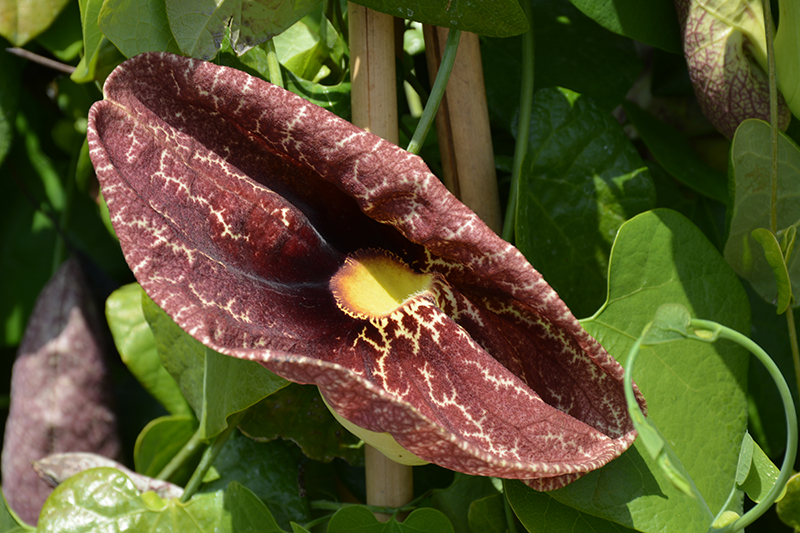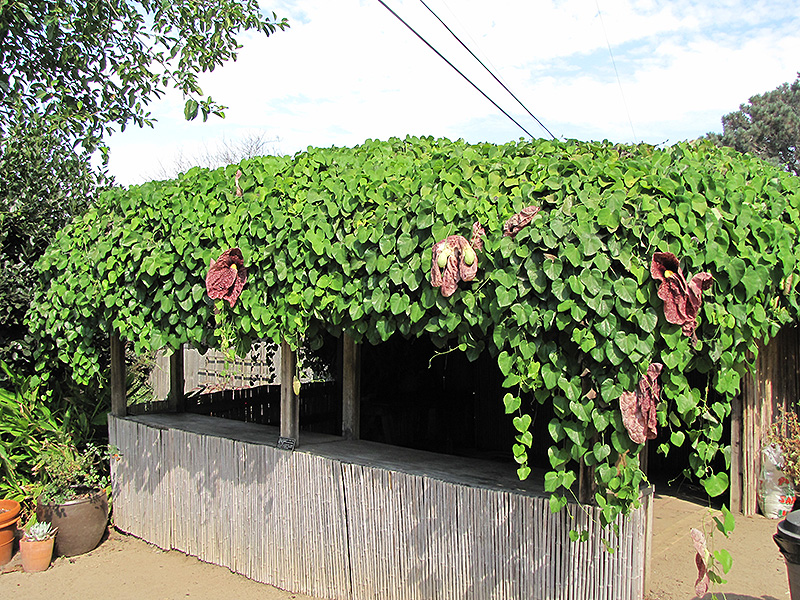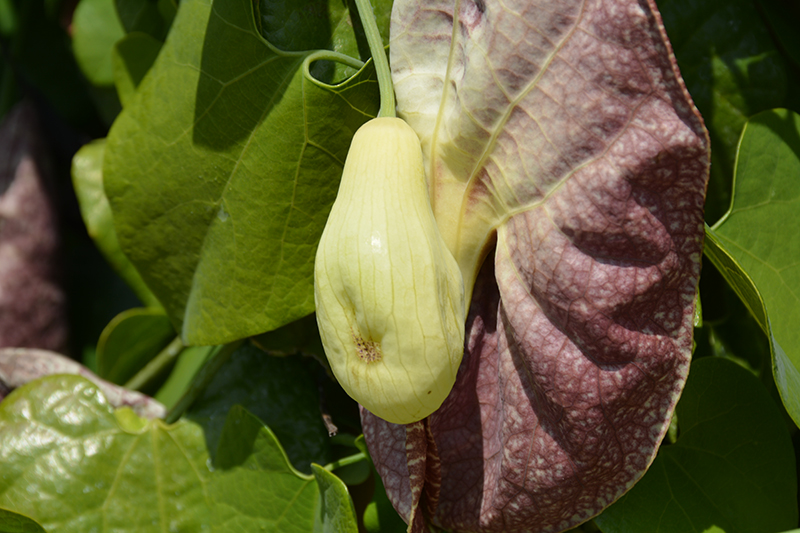Height: 20 feet
Spread: 3 feet
Sunlight:
![]()
![]()
Hardiness Zone: 10a
Other Names: Giant Pelican Flower
Description:
A vigorous vine, excellent for quick screening; oddly shaped burgundy-purple flowers, with distinctive white veins and yellow-orange throats; large leaves provide good shade for pergolas or arbors
Ornamental Features
Giant Dutchman's Pipe features unusual fragrant burgundy tubular flowers with white veins along the branches from late spring to early summer. It has attractive green evergreen foliage. The large glossy heart-shaped leaves are highly ornamental and remain green throughout the winter. It produces tan capsules in late summer.
Landscape Attributes
Giant Dutchman's Pipe is a dense multi-stemmed evergreen woody vine with a twining and trailing habit of growth. Its strikingly bold and coarse texture can be very effective in a balanced landscape composition.
This woody vine will require occasional maintenance and upkeep, and is best pruned in late winter once the threat of extreme cold has passed. It has no significant negative characteristics.
Giant Dutchman's Pipe is recommended for the following landscape applications;
- Hedges/Screening
- General Garden Use
Planting & Growing
Giant Dutchman's Pipe will grow to be about 20 feet tall at maturity, with a spread of 3 feet. As a climbing vine, it tends to be leggy near the base and should be underplanted with low-growing facer plants. It should be planted near a fence, trellis or other landscape structure where it can be trained to grow upwards on it, or allowed to trail off a retaining wall or slope. It grows at a fast rate, and under ideal conditions can be expected to live for approximately 20 years.
This woody vine does best in full sun to partial shade. It prefers to grow in average to moist conditions, and shouldn't be allowed to dry out. It may require supplemental watering during periods of drought or extended heat. It is not particular as to soil type or pH. It is highly tolerant of urban pollution and will even thrive in inner city environments. This species is not originally from North America.




